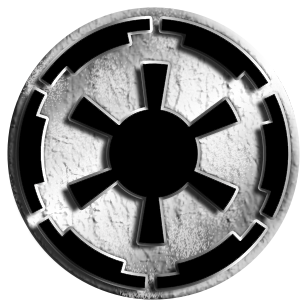

Based on 11.806 megatons per minute combined output of ISD's weapons estimate, and assuming similar output for MonCal cruisers, we can estimate strength of ISD's shields.
We can count battle as starting either at 1:37:30 or 1:39:49. Either way, at 1:53:59 we have ISD exploding. That gives us timeframe of 14 to 16.17 minutes of battle before ISD's start losing their shields, giving us shield strength between 165 and 191 megatons. Low end is 122 megatons. High end, assuming that battle lasted longer - around 20 minutes - is 236 megatons. (New observations for HTL firepower push that in 296 to 656 megaton range). On the other hand, it could have been destroyed by fighter-based ordnance.
Shields are capable of stopping weapons (with exception of ion cannon) and physical impacts.
If we take 15 meters as average, and iron composition, that is 14 000 t per asteroid. We see that ISD isn't being constantly bombarded most of larger asteroids are destroyed, and rest are few meters in diameter at best (3 meters 112 t). Ek = 0.5 x m x v^2 . As most asteroids are floating at relatively small speeds, velocity is same as velocity as destroyer, around 400 meters per second in chase scene. Velocity was probably even lower during normal operations. Given distance between asteroids, it would mean around 1 larger and 20-30 smaller asteroid impacts every 5 to 10 seconds. Energy is 1.12 x 10e12 J for large and 8.96 x 10e9 J for small asteroids totalling 1.3 x 10e11 to 1.4e12 J. That is 7.8 x 10e11 to 1.68 x 10e13 J per minute, or 0.031 to 0.335 kilotons per minute. Even if they stayed in field for entire day, that is 44.64 to 482.4 megatons total capacity for ISD's shields. I must admit that I am inclined towards latter one.